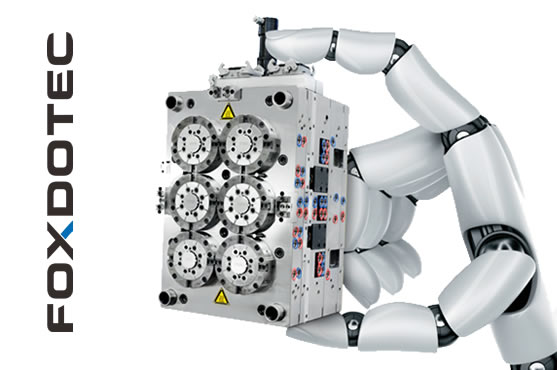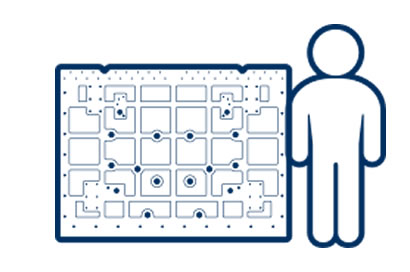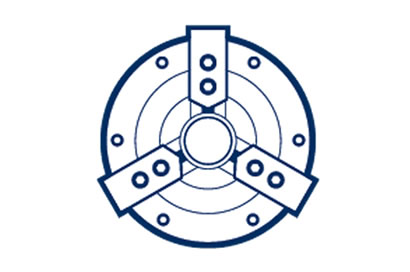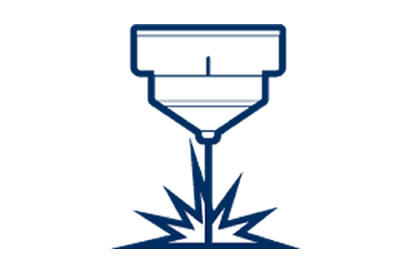XXX
Grind your way to perfection with our Grinding Machining Services! Utilizing state-of-the-art equipment and skilled craftsmanship, we provide precision grinding solutions tailored to your specific needs. Say goodbye to imperfections and hello to impeccable quality. Elevate your projects with our comprehensive Grinding Machining Services. Experience superior surface finishes and exacting tolerances—trust us to achieve excellence in every grind
Grindings
What is Grinding?
Grinding is a machining process that involves using an abrasive wheel or belt to remove material from a workpiece surface to achieve the desired shape, size, and surface finish. It is a versatile process used in various industries for finishing and precision machining of both metallic and non-metallic materials.
The grinding process typically involves the following steps:
- Workpiece Setup: Secure the workpiece on the grinding machine table or chuck, ensuring proper alignment and stability during grinding operations.
- Tool Selection: Choose the appropriate grinding wheel or abrasive belt for the specific material and surface finish requirements. Grinding wheels come in various types, including bonded abrasives, coated abrasives, and superabrasives, each suitable for different applications.
- Grinding Operation: Rotate the grinding wheel or belt at high speed while applying pressure to the workpiece surface. The abrasive particles on the wheel or belt remove material through abrasive action, creating the desired shape and surface finish.
- Coolant and Lubrication: Use coolant or lubricant during the grinding process to reduce heat generation, prevent workpiece distortion, and improve surface finish. This helps prolong grinding wheel life and maintain grinding accuracy.
- Finishing: After grinding, the workpiece may undergo additional finishing operations such as polishing or buffing to further improve surface smoothness and appearance.
- Quality Control: Inspect the ground surface to ensure it meets the specified dimensional tolerances and surface finish requirements. This may involve visual inspection, dimensional measurement, or surface roughness analysis.
Grinding machines come in various types, including surface grinders, cylindrical grinders, and centerless grinders, each offering different capabilities and features suited to specific applications and production requirements.
Precision Injection Mold


How to improve the quality of Grinding?
Improve Grinding Process
To enhance the quality of grinding processes, consider the following strategies:
- Proper Workpiece Setup: Ensure the workpiece is securely held in the grinding machine, properly aligned, and stable during grinding operations to prevent vibration and achieve accurate machining.
- Tool Selection and Maintenance: Choose high-quality grinding wheels or abrasive belts suitable for the material and surface finish requirements. Maintain tools properly by dressing or truing the grinding wheel and replacing it when worn to ensure optimal performance.
- Optimize Grinding Parameters: Adjust grinding parameters such as wheel speed, feed rate, and depth of cut to achieve optimal material removal rates and surface finish. Experiment with different parameter settings to find the best combination for the desired outcome.
- Implement Coolant and Lubrication: Use coolant or lubricant during grinding to reduce heat generation, prevent workpiece distortion, and improve surface finish. Proper lubrication also helps extend the life of the grinding wheel and maintain grinding accuracy.
- Monitor Grinding Process: Continuously monitor the grinding process using sensors or monitoring systems to detect any deviations from the desired parameters. Adjustments can then be made in real-time to ensure consistent grinding quality.
- Inspect Finished Surfaces: Inspect the ground surfaces using surface roughness measurement tools or visual inspection to ensure they meet the specified dimensional tolerances and surface finish requirements. Address any defects or irregularities promptly.
- Invest in Advanced Technologies: Consider investing in advanced grinding technologies such as CNC (Computer Numerical Control) grinding machines, adaptive control systems, or in-process measurement systems to improve efficiency, accuracy, and quality control.
- Continuous Improvement: Foster a culture of continuous improvement within the organization by encouraging feedback, analyzing performance data, and implementing best practices. Regularly review and refine grinding processes to achieve higher quality standards.
By implementing these strategies and focusing on continuous improvement, you can enhance the quality of grinding processes and achieve better results in terms of surface finish, dimensional accuracy, and overall part quality.

CNC Machining
CNC machining is a computer-controlled manufacturing process that utilizes pre-programmed software to dictate the movement of machinery and tools. This technology enables the precise cutting, drilling, and shaping of materials such as metal, plastic, and wood to create intricate components with high accuracy and consistency.
Read More
Precision Grinding
Precision grinding is a manufacturing process that involves the removal of material using abrasives to achieve extremely tight tolerances and surface finishes. used to produce components with intricate shapes, precise dimensions, and smooth surfaces. Precision grinding techniques include cylindrical grinding, surface grinding, and internal grinding.
Read More
Electrical Discharge Machining
Electrical Discharge Machining (EDM) is a non-traditional machining process that utilizes electrical discharges to erode material from a workpiece. It is particularly useful for machining complex shapes and hardened materials that are difficult to machine with conventional methods. EDM can achieve high precision and surface quality.
Read MorePrecision machining and manufacturing involve the use of advanced techniques and equipment to produce highly accurate and intricate components with tight tolerances. It requires expertise in machining processes, material properties, and quality control methods to ensure the production of high-quality parts for various industries.
Key Aspects of Understanding Injection Molds
- Design Principles: Understand the principles of injection mold design, including considerations for part geometry, material flow, cooling, and ejection.
- Materials and Construction: Explore the materials commonly used in injection mold construction, such as tool steel, aluminum, and beryllium copper.
- Manufacturing Techniques: Gain insights into the manufacturing processes used to produce injection molds, including machining, EDM, and CNC milling.
- Mold Maintenance and Repair: Learn about the importance of mold maintenance and preventive maintenance schedules to ensure the longevity and performance of injection molds.
- Tooling Standards and Regulations: Familiarize yourself with industry standards and regulations related to injection mold design and manufacturing.
- Advanced Technologies: Stay informed about advancements in injection mold technology, such as rapid prototyping, additive manufacturing (3D printing), and simulation software.
- Cost Considerations: Gain insights into the cost factors associated with injection mold production and learn about strategies for cost optimization.
- Case Studies and Best Practices: Study real-world examples of successful injection mold projects across various industries.
Key Aspects of Understanding Precision Machining
- Processes and Techniques: Explore the various precision machining processes and techniques, including turning, milling, drilling, grinding, electrical discharge machining (EDM), and others.
- Materials: Learn about the different types of materials commonly machined using precision techniques, such as metals (e.g., aluminum, steel, titanium), plastics, ceramics, and composites.
- Tooling and Equipment: Familiarize yourself with the cutting tools, machine tools, and equipment used in precision machining.
- Tolerances and Metrology: Gain insights into tolerance requirements and metrology techniques used to measure and verify part dimensions and surface characteristics.
- Design for Manufacturing (DFM): Explore principles of design for manufacturability (DFM) and how they apply to precision machining.
- Quality Assurance: Understand quality control measures and inspection techniques used in precision machining.
- Applications and Industries: Explore the diverse applications of precision machining across industries such as aerospace, automotive, medical, electronics, and tooling.
- Advanced Technologies: Stay informed about advancements in precision machining technology, including automation, robotics, additive manufacturing (3D printing), and advanced materials.
Precision machining and mold technical documents
Other Downloads
- Technical Parameter 3.9 MB
- Technical Drawing 1.8 MB
